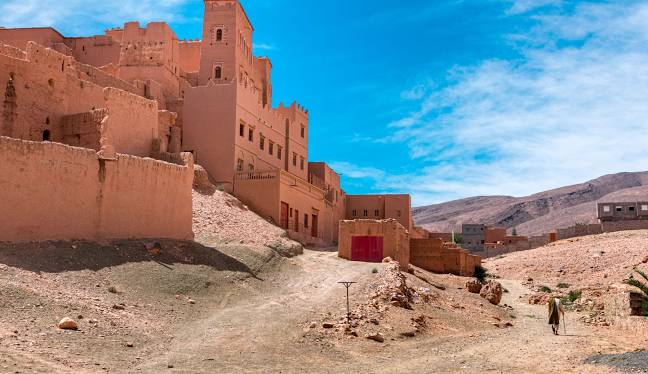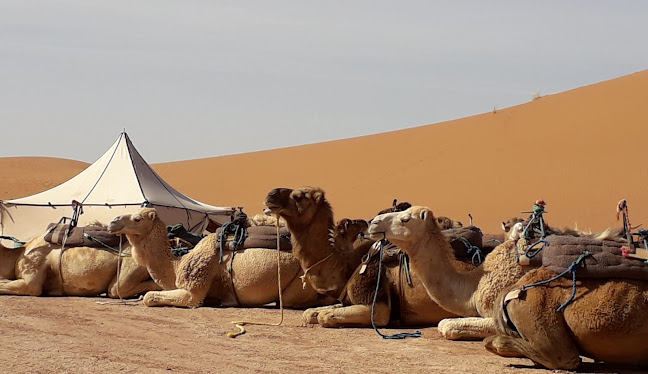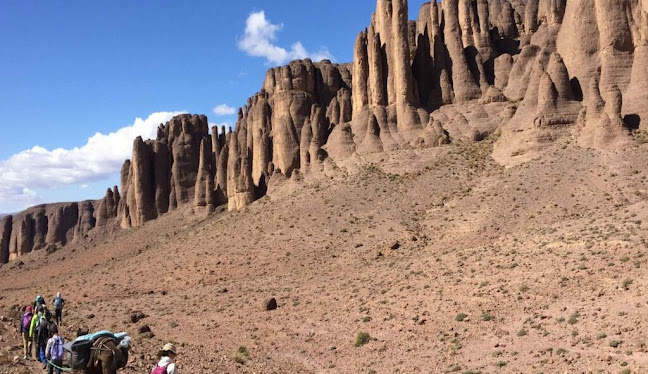The Zagora desert, home to Kasbah of Peace and located in the southeastern region of Morocco, is a captivating and lesser-known gateway to the vast Sahara. Nestled in the Draa River Valley, near the Algerian border, Zagora is often overshadowed by its more famous neighbor, Merzouga. However, what it lacks in fame, it makes up for in authenticity, natural beauty, and a deep connection to Morocco’s rich Berber and nomadic heritage.
Zagora Desert
The Zagora desert lies at the edge of the pre-Saharan steppe, where the landscape begins to transition from arid plains into the sweeping dunes and rock formations typical of the Sahara. The area is characterized by arid desert terrain, scattered oases, and the life-giving Draa River, the longest one in Morocco. While not as huge in terms of towering dunes as Erg Chebbi or Chigaga, the desert surrounding Zagora offers wide expanses of golden sand, flat plateaus, and jagged mountains.
The climate in Zagora is typically desertic, with very hot summers that often see temperatures soar above 45°C, and mild winters. Rainfall is scarce and unpredictable, but when it does occur, it transforms the desert briefly, bringing out patches of green around the oases. The best time to visit is during spring, from March to May, or autumn, which is from September to November, when the temperatures are more moderate and the conditions are ideal for trekking and exploration.
Historical significance of the Zagora desert lies in its role as a crossroads for ancient trans-Saharan trade routes. Caravans of camels laden with salt, gold, ivory, and other goods would pass through the area en route from Timbuktu and sub-Saharan Africa to the northern cities of Morocco. A famous sign still stands in Zagora that reads ‘Timbuktu 52 days’, referring to the estimated time it took for a camel caravan to make it to the city.
The local population is predominantly Berber, and the culture reflects centuries of nomadic traditions. Visitors to Zagora can experience authentic hospitality, music, cuisine, and crafts. Traditional earthen architecture, colorful rugs, and handwoven baskets can be seen in the markets and homes throughout the region. Despite its remote location, Zagora offers a wide range of experiences for travelers looking to explore the Moroccan desert without the crowds.
Camel trekking is among the most popular activities of the Zagora desert, allowing visitors to journey into the dunes and camp under stars in traditional Bedouin-style tents. These excursions range from a single night to several days and offer a rare opportunity to disconnect from modern life and immerse oneself in the silence and stillness of the desert. 4×4 excursions and quad biking are also popular, especially for those eager to explore the more rugged and less accessible parts of the desert.
The rocky outcrops, dry riverbeds, and occasional oasis towns make for thrilling adventures. Erg Chigaga, one of Morocco’s largest dune fields, is accessible from Zagora via a multi-hour drive and is considered one of the most remote and pristine parts of the Moroccan Sahara. Nearby attractions include the ancient Jewish quarter of Amezrou, the palm groves of the Draa Valley, and the centuries-old fortified Tamegroute, which is home to a famous Islamic library and a green pottery tradition that dates back centuries.
Tourism in the Zagora desert is generally more low-key and eco-friendly compared to other parts of Morocco. Many local operators prioritize sustainable practices, employing guides from the region and utilizing traditional methods for cooking, construction, and desert travel. This not only helps preserve the fragile desert ecosystem but also supports local communities and keeps cultural traditions alive.
Visitors are encouraged to travel responsibly, avoid plastic waste, respect local customs, and support businesses that contribute positively to the region. The Zagora Desert offers a unique and soulful experience for travelers seeking to explore the Moroccan Sahara beyond the typical tourist circuits. Its vast, open landscapes, historical richness, and cultural authenticity make it a hidden gem for those looking to connect with nature, history, and the enduring spirit of the desert.




